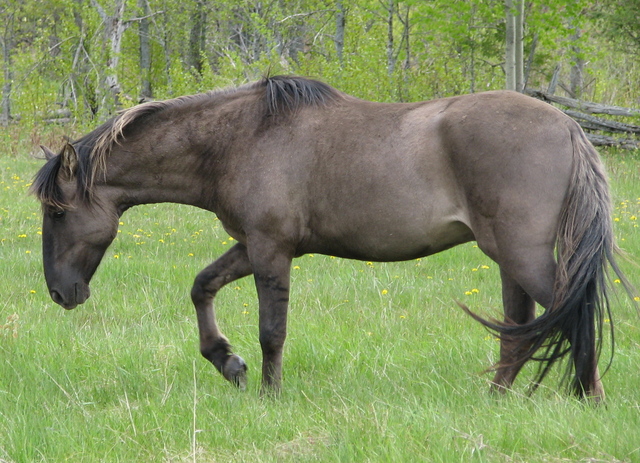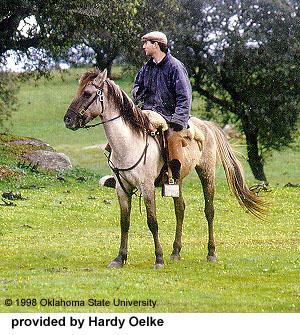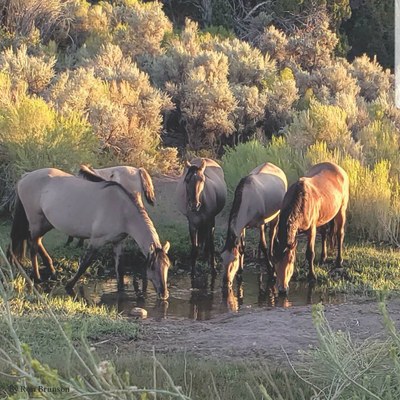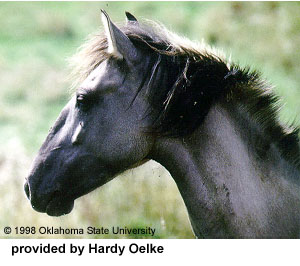Sorraia Horses
 Also Known By: Marismeño (Spain)
Also Known By: Marismeño (Spain)
The Sorraia horse has no history as a domestic breed, but is the last remnant of the indigenous wild horse of southern Iberia. It stands around 14 h.h. Captured animals have been broken to ride and used for herding the fighting bulls and other livestock. This small horse was the primary ancestor of the famous horses of Andalusia and Lusitania and, both directly and indirectly, ancestor to many horses throughout Europe and the Americas. The Sorraia is found portrayed faithfully in prehistoric cave art, displaying the classic Iberian convex profile, also found in the old-time North African Barb. The Portuguese scientist Ruy D' Andrade, who had discovered them in 1920 in the lowlands of the Portuguese River Sorraia, named these horses "Sorraia".

The Sorraia is nearly extinct. A few herds are maintained in half a dozen places in Portugal and a few places in Germany.
The Sorraia is noted for its ability to withstand extremes of climate, particularly dry, hot climates, and to survive on very little forage while at the same time maintaining its health. Its' hardiness, as well at its agility and ability to collect and work in the bridle, once made the Sorraia highly valuable to local stockmen. Too long-legged to be seriously considered a pony type, the Sorraia is a small horse.
Old documents indicate that these horses were taken to the Americas by the Spanish conquistadors. Sorraia blood in the Americas is evident, as several breeds in both North and South America bear the dun and grullo coloration and other physical characteristics of this ancient horse. Furthermore, DNA analyses of American mustangs have shown similar and even identical DNA patterns to that of the Sorraia.

The Sorraia is always dun or grullo in color, with a dark face/muzzle area, black dorsal stripe, black-tipped ears, usually zebra stripes on the legs, and sometimes a stripe across the shoulders, or even stripes across neck, shoulders, and back. The black mane and tail are fringed by lighter-colored, often almost white, hair. The pure Sorraia does not have white markings, and does not show infusion of either Oriental or North European blood. Sorraia foals are born with a zebra-like pattern all over.
The head is somewhat long, with a convex profile. The eyes are set high, the ears
are fairly long; the neck is long and slender, the withers are prominent and well
defined; the back is of medium length and straight; the croup is sloping, but not
steeply dropping, and rafter-shaped when viewed from front or behind; the tail set
is not particularly high or low, but the tail is never held very high, not even when
the horse is excited; the chest is deep and narrow; the shoulder is long; the legs
are straight with rather long, round cannon bones, well defined tendons, long, sloped pasterns, and hard hooves of dark
color.
cannon bones, well defined tendons, long, sloped pasterns, and hard hooves of dark
color.
The Sorraia and the North African Barb probably had a common root due to the pre-historic land bridge at Gibraltar.
References
Oelke, Hardy, Born Survivors on the Eve of Extinction, Premier Publishing Equine, Wamego, Kansas, 1997.
